-
 Bitcoin
Bitcoin $107,443.3008
-1.17% -
 Ethereum
Ethereum $2,494.2503
-0.63% -
 Tether USDt
Tether USDt $1.0003
0.00% -
 XRP
XRP $2.2496
2.23% -
 BNB
BNB $658.7569
0.63% -
 Solana
Solana $154.9826
1.94% -
 USDC
USDC $1.0000
0.01% -
 TRON
TRON $0.2799
1.07% -
 Dogecoin
Dogecoin $0.1659
-1.78% -
 Cardano
Cardano $0.5745
0.25% -
 Hyperliquid
Hyperliquid $39.7005
0.13% -
 Bitcoin Cash
Bitcoin Cash $519.5989
3.78% -
 Sui
Sui $2.7874
-2.40% -
 Chainlink
Chainlink $13.3762
-1.69% -
 UNUS SED LEO
UNUS SED LEO $9.0784
-0.64% -
 Avalanche
Avalanche $17.9846
-2.81% -
 Stellar
Stellar $0.2390
-0.06% -
 Toncoin
Toncoin $2.9028
0.25% -
 Shiba Inu
Shiba Inu $0.0...01147
-2.17% -
 Litecoin
Litecoin $86.6956
-1.27% -
 Hedera
Hedera $0.1508
-0.50% -
 Monero
Monero $322.6222
3.26% -
 Polkadot
Polkadot $3.4124
-2.99% -
 Dai
Dai $0.9999
0.00% -
 Bitget Token
Bitget Token $4.5434
-1.97% -
 Ethena USDe
Ethena USDe $1.0002
0.00% -
 Uniswap
Uniswap $7.1562
-2.61% -
 Aave
Aave $275.8830
-1.02% -
 Pepe
Pepe $0.0...09790
-4.04% -
 Pi
Pi $0.5018
-5.09%
How to enable blind signing on Ledger for MetaMask?
Enabling blind signing on your Ledger allows MetaMask to interact with complex smart contracts, enhancing DeFi and NFT functionality but requiring trust in the app's integrity.
Jul 01, 2025 at 07:28 am
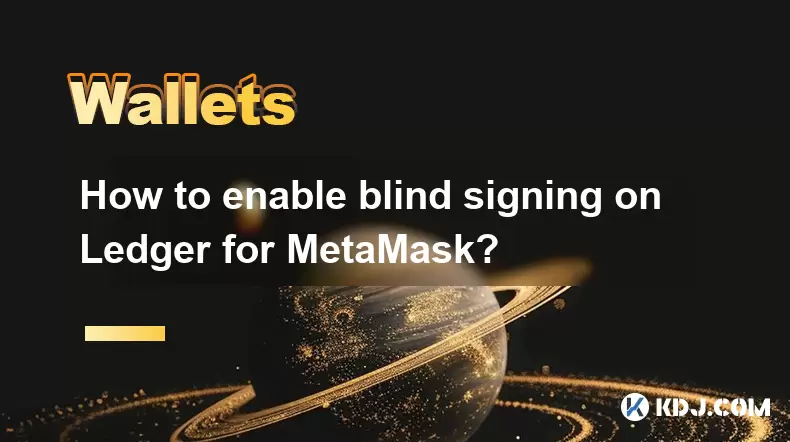
What is Blind Signing and Why Is It Important?
Blind signing refers to a feature that allows certain applications, like MetaMask, to interact with hardware wallets such as Ledger for advanced operations. Normally, when you sign a transaction using a Ledger device, the device displays the full transaction details on its screen for verification. However, some complex transactions — particularly those involving smart contracts — cannot be fully interpreted by the Ledger app due to their dynamic nature.
When blind signing is enabled, the Ledger device no longer decodes or displays the full content of these transactions before signing. Instead, it trusts the connected software (like MetaMask) to interpret and present the correct information. While this increases compatibility with decentralized applications (dApps), it also introduces potential security risks if the dApp or wallet is compromised.
Enabling blind signing should only be done after understanding the trade-off between usability and security.
Prerequisites Before Enabling Blind Signing
Before proceeding with enabling blind signing on your Ledger device, ensure the following conditions are met:
- You have a Ledger Nano S or Nano X device.
- Your device is running the latest firmware.
- The Ethereum (ETH) app is installed on your Ledger.
- You're using the Ledger Live application.
- MetaMask is installed in your browser and properly configured.
- Your Ethereum account has been imported into MetaMask via the Ledger bridge.
These steps ensure that your environment is secure and compatible with the necessary protocols.
Step-by-Step Guide: Enabling Blind Signing on Ledger
To enable blind signing, follow these detailed steps carefully:
- Connect your Ledger device to your computer via USB.
- Open the Ledger Live desktop application.
- Navigate to the Settings section, typically found in the left-hand sidebar.
- Click on Security within the settings menu.
- Look for an option labeled "Blind signing permission" or similar.
- Toggle the switch to enable blind signing.
- Confirm the change on your Ledger device’s screen by pressing the buttons accordingly.
Once enabled, your Ledger will now allow MetaMask to request signatures for smart contract interactions without displaying full transaction data. This is essential for interacting with many DeFi platforms and NFT marketplaces.
Always double-check that you’re enabling this feature intentionally and understand the implications.
Connecting Ledger to MetaMask with Blind Signing Enabled
After enabling blind signing, you can proceed to connect your Ledger to MetaMask:
- Launch your browser and open the MetaMask extension.
- Click on the profile icon at the top right and select "Connect Hardware Wallet."
- Choose Ledger from the list of supported wallets.
- Follow the on-screen instructions to detect your Ledger device.
- Select the Ethereum account(s) you wish to import.
- Confirm each account address directly on your Ledger device screen.
At this point, MetaMask should successfully recognize your Ledger accounts. Any transaction initiated through MetaMask will now be signed using your Ledger, including those requiring blind signing.
Ensure that all prompts on both MetaMask and Ledger are verified before proceeding.
Understanding When Blind Signing is Used
Blind signing becomes active primarily during interactions with complex smart contracts. These include:
- Swapping tokens on decentralized exchanges (DEXs) like Uniswap or SushiSwap.
- Participating in yield farming or staking pools.
- Minting or transferring NFTs.
- Voting in DAOs or interacting with governance protocols.
In these scenarios, the transaction data may involve encoded function calls that aren’t human-readable. Without blind signing, your Ledger would reject these transactions entirely, limiting your ability to engage with many blockchain-based services.
Each time a blind-signed transaction is executed, you're placing trust in the integrity of the dApp and MetaMask interface.
Frequently Asked Questions
Q1: Can I disable blind signing once it's enabled?
Yes, you can go back to Ledger Live > Settings > Security and toggle off "Blind signing permission." Disabling it will prevent MetaMask from requesting blind-signed transactions, but it might break functionality with certain dApps.
Q2: Is there an alternative to enabling blind signing on Ledger?
You can use alternative wallets like Rabby or Frame which offer better transparency for smart contract interactions without requiring blind signing. However, these may not integrate seamlessly with all platforms.
Q3: Does enabling blind signing expose my private keys?
No, your private keys remain securely stored on your Ledger device. Blind signing only affects how transaction data is displayed and interpreted, not how your keys are handled.
Q4: Are there any visual indicators when a transaction uses blind signing?
MetaMask does not currently provide a clear indicator. Always verify the purpose and origin of a transaction before approving it on your Ledger device.
Disclaimer:info@kdj.com
The information provided is not trading advice. kdj.com does not assume any responsibility for any investments made based on the information provided in this article. Cryptocurrencies are highly volatile and it is highly recommended that you invest with caution after thorough research!
If you believe that the content used on this website infringes your copyright, please contact us immediately (info@kdj.com) and we will delete it promptly.
- Donald Trump, TRUMP Memecoin, and the Latest Move: A New York Perspective
- 2025-07-01 17:10:12
- Cardano, Solana, XRP: Navigating the Crypto Seas in Q3 2025
- 2025-07-01 16:30:12
- Bitcoin Holders and the Price Hold: What's the Deal?
- 2025-07-01 16:50:26
- ChatGPT, Crypto Trading, and a $100K Profit: AI's Edge in the Wild West
- 2025-07-01 16:30:12
- Mutuum Finance Presale vs. Dogecoin: A New Challenger Approaches?
- 2025-07-01 16:50:26
- Memecoins to Buy in July 2025: Riding the Hype Wave
- 2025-07-01 17:10:12
Related knowledge
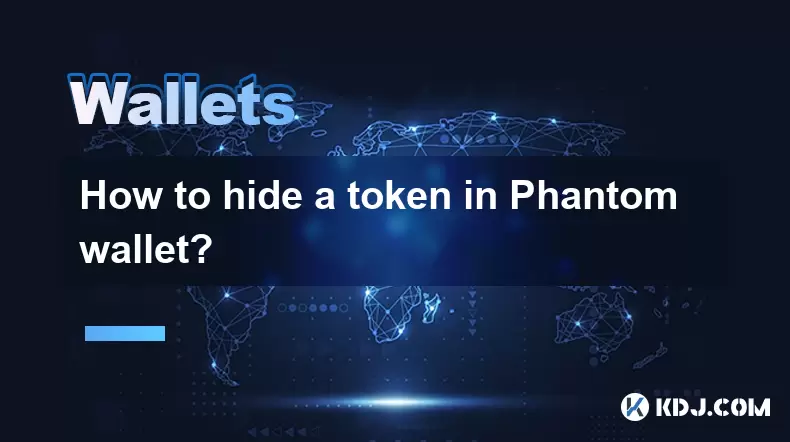
How to hide a token in Phantom wallet?
Jul 01,2025 at 05:49pm
Understanding the Phantom Wallet InterfacePhantom wallet is a popular non-custodial wallet used primarily for interacting with the Solana blockchain. It allows users to store, send, receive, and manage various tokens, including both fungible and non-fungible tokens (NFTs). Before attempting to hide a token, it's essential to understand how the wallet in...
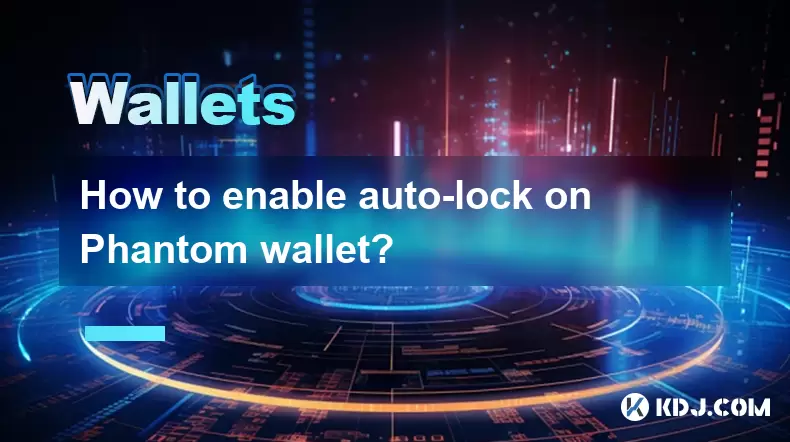
How to enable auto-lock on Phantom wallet?
Jul 01,2025 at 04:01pm
What is Auto-Lock in Phantom Wallet?Phantom wallet is a popular non-custodial cryptocurrency wallet used primarily for interacting with the Solana blockchain. One of its security features includes the ability to set an auto-lock timer, which ensures that the wallet locks itself automatically after a period of inactivity. Auto-lock enhances security by p...
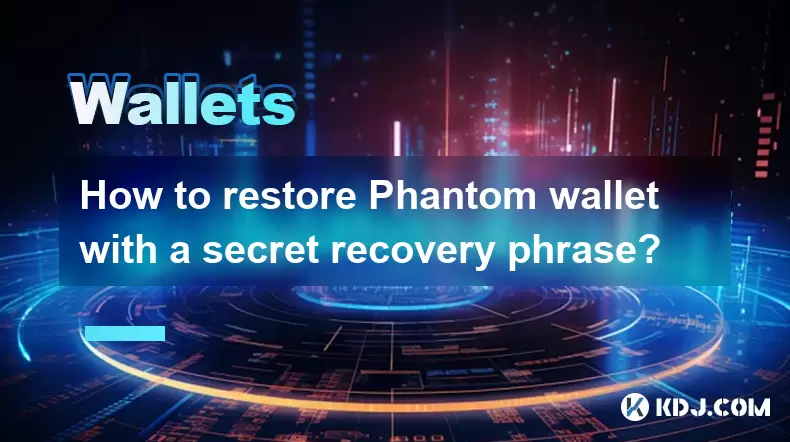
How to restore Phantom wallet with a secret recovery phrase?
Jul 01,2025 at 02:56pm
What is a Phantom wallet and why might you need to restore it?Phantom is a popular non-custodial cryptocurrency wallet primarily used for interacting with the Solana blockchain. It allows users to store, send, receive, and stake SOL tokens as well as manage NFTs and other SPL tokens. Since Phantom wallet is non-custodial, users are solely responsible fo...
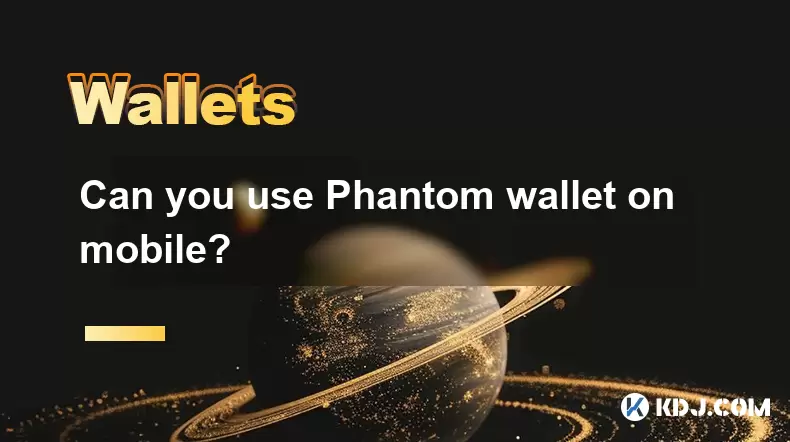
Can you use Phantom wallet on mobile?
Jul 01,2025 at 06:07pm
Understanding Phantom Wallet and Its Mobile CompatibilityPhantom wallet is a non-custodial cryptocurrency wallet primarily designed for interacting with the Solana blockchain. Initially developed as a browser extension, Phantom has expanded its functionality to include mobile platforms. This means users can access their Solana-based assets on mobile dev...
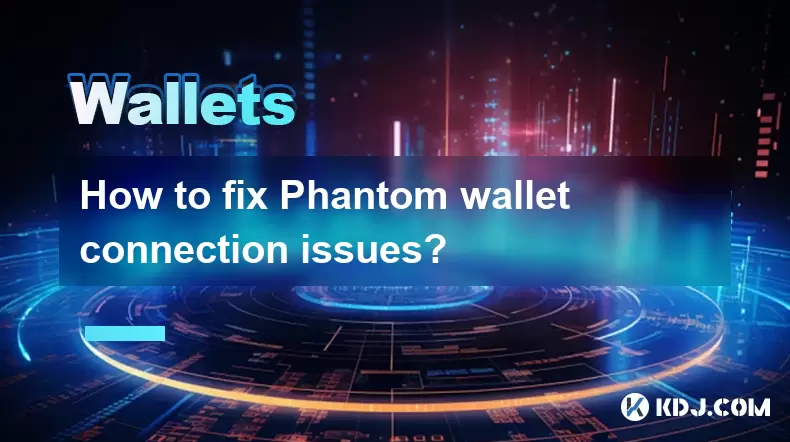
How to fix Phantom wallet connection issues?
Jul 01,2025 at 02:21pm
Understanding Phantom Wallet Connection IssuesPhantom wallet is one of the most popular non-custodial wallets for interacting with Solana-based decentralized applications (dApps). However, users occasionally face connection problems when trying to link their wallet to a dApp or platform. These issues can manifest as error messages, failed connection att...
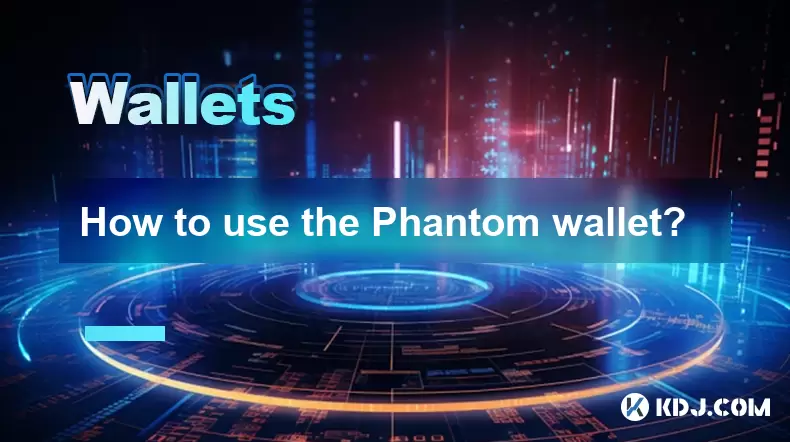
How to use the Phantom wallet?
Jul 01,2025 at 06:01pm
What is the Phantom Wallet and Why Use It?The Phantom wallet is a non-custodial cryptocurrency wallet specifically designed for interacting with the Solana blockchain. Unlike custodial wallets, where a third party holds your private keys, Phantom gives users full control over their assets. This ensures that users maintain ownership of their private keys...

How to hide a token in Phantom wallet?
Jul 01,2025 at 05:49pm
Understanding the Phantom Wallet InterfacePhantom wallet is a popular non-custodial wallet used primarily for interacting with the Solana blockchain. It allows users to store, send, receive, and manage various tokens, including both fungible and non-fungible tokens (NFTs). Before attempting to hide a token, it's essential to understand how the wallet in...

How to enable auto-lock on Phantom wallet?
Jul 01,2025 at 04:01pm
What is Auto-Lock in Phantom Wallet?Phantom wallet is a popular non-custodial cryptocurrency wallet used primarily for interacting with the Solana blockchain. One of its security features includes the ability to set an auto-lock timer, which ensures that the wallet locks itself automatically after a period of inactivity. Auto-lock enhances security by p...

How to restore Phantom wallet with a secret recovery phrase?
Jul 01,2025 at 02:56pm
What is a Phantom wallet and why might you need to restore it?Phantom is a popular non-custodial cryptocurrency wallet primarily used for interacting with the Solana blockchain. It allows users to store, send, receive, and stake SOL tokens as well as manage NFTs and other SPL tokens. Since Phantom wallet is non-custodial, users are solely responsible fo...

Can you use Phantom wallet on mobile?
Jul 01,2025 at 06:07pm
Understanding Phantom Wallet and Its Mobile CompatibilityPhantom wallet is a non-custodial cryptocurrency wallet primarily designed for interacting with the Solana blockchain. Initially developed as a browser extension, Phantom has expanded its functionality to include mobile platforms. This means users can access their Solana-based assets on mobile dev...

How to fix Phantom wallet connection issues?
Jul 01,2025 at 02:21pm
Understanding Phantom Wallet Connection IssuesPhantom wallet is one of the most popular non-custodial wallets for interacting with Solana-based decentralized applications (dApps). However, users occasionally face connection problems when trying to link their wallet to a dApp or platform. These issues can manifest as error messages, failed connection att...

How to use the Phantom wallet?
Jul 01,2025 at 06:01pm
What is the Phantom Wallet and Why Use It?The Phantom wallet is a non-custodial cryptocurrency wallet specifically designed for interacting with the Solana blockchain. Unlike custodial wallets, where a third party holds your private keys, Phantom gives users full control over their assets. This ensures that users maintain ownership of their private keys...
See all articles

























































































